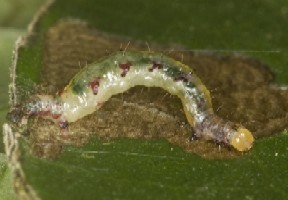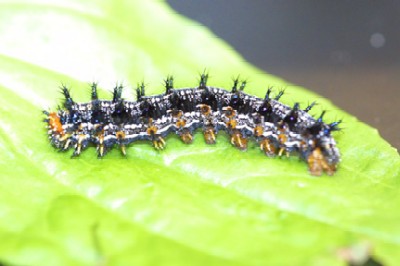Research
My research focuses on the evolution of herbivore diet breadth via physiological studies of multitrophic interactions between plants, herbivores, and natural enemies. Specific avenues of study include: (1) evolutionary ecology of insect immunity (2) behavioral adaptations of herbivores to host plants, and (3) physiological adaptations of herbivores to global change.
Specialist vs. Generalist
My research investigates the effects of plant chemistry on caterpillar resistance to parasitism. Results from my dissertation work at Tulane University showed that specialist sequestering caterpillars have a decrease in immune function, making them more susceptible to parasitism and pathogens. On the contrary, my postdoctoral work at Wesleyan University indicates that plant chemistry can help to defend generalist herbivores from parasitism. These two very different effects of plant chemistry on the immune response are a result of the different adaptations specialist and generalist herbivores have to their environment. Specifically, while generalist herbivores can choose plants according to physiological needs, specialist herbivores are more constrained to a particular diet. These two foraging strategies are likely the result of a suite of different variables, including the dominant natural enemies in the community.
|
|
|
My recent work as a post-doc focuses on foraging behavior of a generalist herbivore. Specifically, this work aims to elucidate the mechanisms determining foraging behavior by a generalist caterpillar (Grammia incorrupta: Arctiidae). Results from this work indicate that not only does host plant selection change when the caterpillar is parasitized, but it also changes over the course of the parasitism infection in order to maximize the likelihood of surviving. We are also investigating the effects of macronutrients on the immune response with results suggesting that high carbohydrate intake may boost the immune response.


In the lab, I have replicated parasitoid attack by injecting caterpillars with silica beads as a proxy for parasitoid eggs. The beads are later analyzed to get an assessment of the caterpillar's immune response. This technique has allowed us to test an important question in chemical ecology; what are the physiological costs associated with feeding and/or sequestering plant secondary metabolites for herbivores? Another technique that we have used to answer this question is measuring caterpillar respiration rate with a CO2 gas analyzer. This has allowed us to estimate the metabolic effects of feeding on high concentrations of secondary metabolites. Using these techniques, myself and colleagues have determined that diet specialized caterpillars (Junonia coenia:Nymphalidae) incur an immune cost when feeding on plants with high concentrations of secondary metabolites. Additionally, my work with tropical caterpillars has shown that the immune response is one of the most efficient defenses that caterpillars have against parasitoids. I am currently building a data set with melanization rates for temperate caterpillars. My goal is to eventually accumulate enough data to do a tropical/temperate comparison of caterpillar immune function.
|
Differences between species in melanization |


